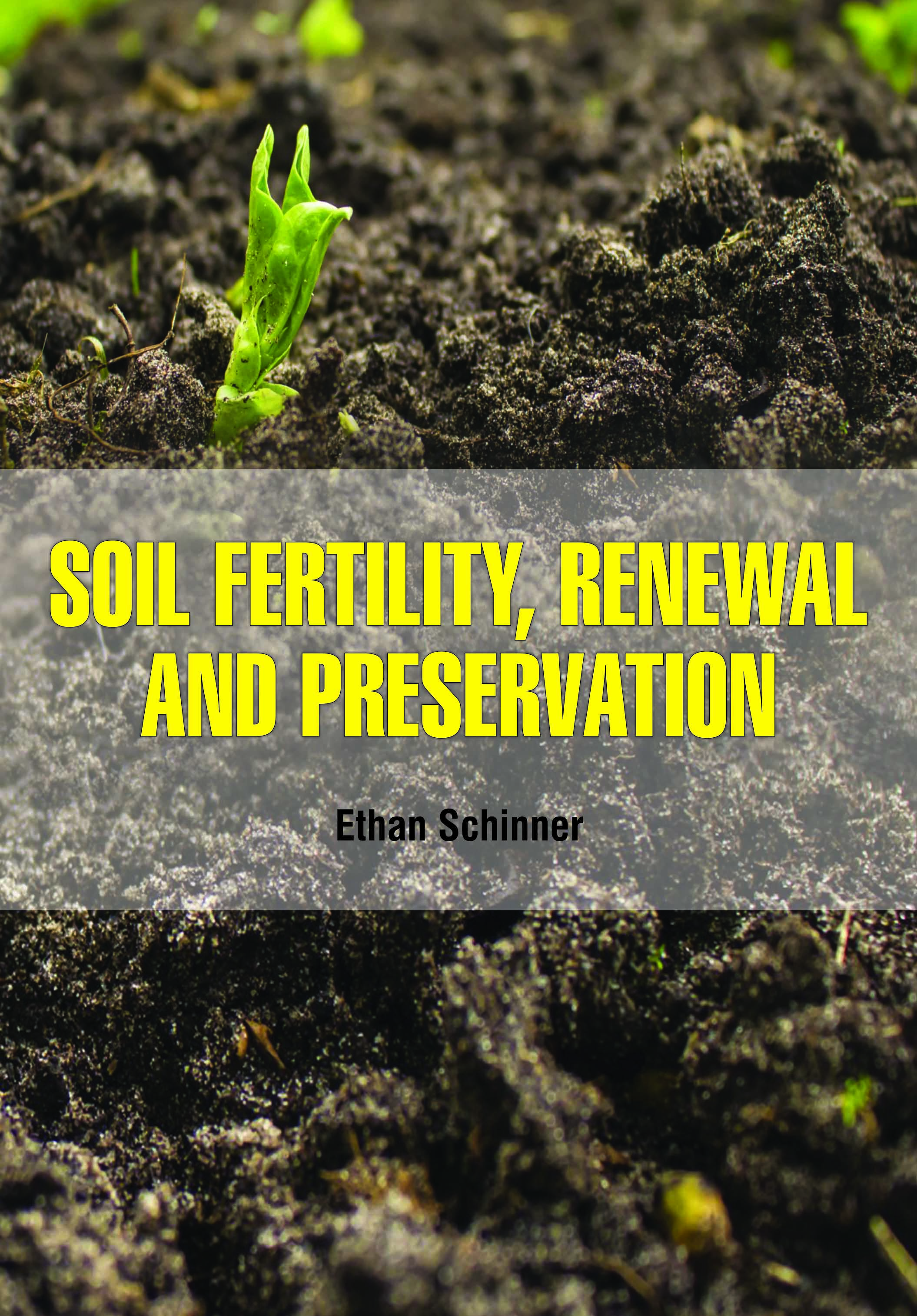
Soil Fertility, Renewal and Preservation
by Ethan Schinner
| ISBN | 9781799600046 |
|---|---|
| Publisher | White Press Academics |
| Copyright Year | 2020 |
| Price | $195.00 |

by Ethan Schinner
| ISBN | 9781799600046 |
|---|---|
| Publisher | White Press Academics |
| Copyright Year | 2020 |
| Price | $195.00 |
Soil fertility is a concept based on the amounts of essential nutrients available to the plants. The plant nutrients involved are classified as macronutrients such as nitrogen (N.), phosphorous (P), potassium (K), calcium (Ca), magnesium (Mg), and sulfur (S); or as micronutrients such as i iron (Fe), manganese (Mn), copper (Cu), zinc (Zn), boron (B), and molybdenum (Mb). The amount of each of these nutrients is not the only factor in determining whether there are nutrient shortages. Soil pH (acidity) is also important because under certain pH conditions, nutrients form insoluble compounds which are unavailable to be taken up by plant roots. Nutrient cations occur in the soil solution and are loosely held by clay/humic micelle as exchangeable cations and are also fixed by clay minerals in the form of non-exchangeable cations. Nitrate, sulphate and phosphate anions are loosely adsorbed on the surface of hydrous oxides of iron and aluminium in acidic soils and on the surface of calcite in alkaline soils and are also fixed in the non-exchangeable form. The book is concerned primarily with the interrelationships of soils and growing plants. It has been prepared as a textbook for students taking a course in soil fertility and as a reference book for students in soil management courses.